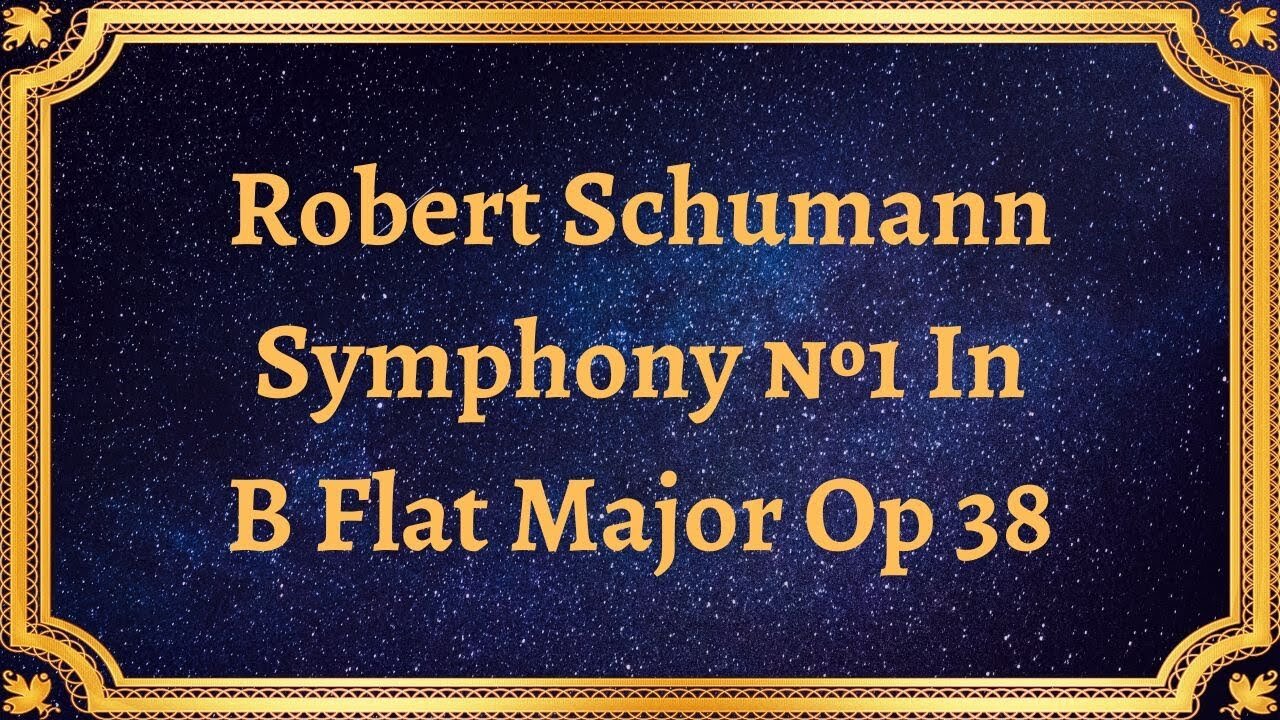Premium Only Content

Robert Schumann Symphony №1 In B Flat Major Op 38
#classicalmusic #RobertSchumann #SymphonyNo1 #BFlatMajor #Op38 #musicalcomposition #Romanticera #symphony #classicalcomposer #orchestralmusic #SchumannsSymphony #programmaticmusic #musicalstructure #emotionalexpression
Publication date 1951
ERNEST ANSERMET conducting L’Orchestra De La Suisse Romande
Robert Schumann, a renowned composer of the Romantic era, left an indelible mark on the world of classical music. Among his notable works, Symphony No. 1 in B Flat Major, Op. 38, often referred to as the "Spring Symphony," stands as a testament to Schumann's musical genius and his ability to evoke vivid emotions through orchestral compositions.
Composed in 1841, Schumann's Symphony No. 1 emerged during a period of artistic and cultural revolution in Europe. This symphony marked a significant shift in the composer's career as he transitioned from writing primarily piano music to orchestral compositions. Inspired by the arrival of spring, the symphony reflects Schumann's appreciation for nature and his desire to infuse his music with vibrant imagery and emotional depth.
Schumann's Symphony No. 1 embraces the traditional four-movement structure of a symphony. The opening movement, marked by its energetic and joyful themes, captures the essence of springtime awakening. The second movement, a delicate and lyrical intermezzo, provides a contrasting emotional landscape. The third movement offers a spirited scherzo filled with rhythmic vitality, while the finale brings the symphony to a grand and triumphant conclusion, exuding a sense of celebration and renewal.
Schumann's Symphony No. 1 is often associated with programmatic elements, meaning that it evokes specific images or narratives. The symphony's evocative melodies and orchestral colors paint a vivid picture of nature's awakening during springtime. From the opening notes, listeners are transported to a world filled with blooming flowers, chirping birds, and the gentle caress of a warm breeze. The symphony's emotional expression ranges from exuberance and optimism to introspection and tenderness, mirroring the complexities of human emotions and the cycles of life.
Schumann's Symphony No. 1 holds a significant place in the repertoire of Romantic symphonies. Its lush orchestration, expressive melodies, and imaginative programmatic elements have influenced composers of subsequent generations. The symphony's celebration of nature and its emotional depth paved the way for a new era of symphonic writing, inspiring composers to explore the boundaries of musical expression.
Robert Schumann's Symphony No. 1 in B Flat Major, Op. 38, affectionately known as the "Spring Symphony," exemplifies the composer's mastery of orchestral composition and his ability to evoke powerful emotions through music. Its vibrant melodies, evocative programmatic elements, and exploration of the human experience make it a captivating and enduring piece. Schumann's Symphony No. 1 continues to captivate audiences with its celebration of nature, its emotional depth, and its lasting influence on the symphonic tradition. Through this symphony, Schumann's artistic legacy as a Romantic composer shines brightly, solidifying his place among the great musical visionaries of his time.
You have the opportunity to support the channel https://destream.net/live/RadSiarAl/donate
-
 48:22
48:22
Classical music_Music Inspiration
1 month agoHector Berlioz Fantastic Symphony
791 -
 24:24
24:24
GritsGG
14 hours agoSpectating Random Solos with the Rank 1 Player - Pro Strategies!
6.26K -
 LIVE
LIVE
Lofi Girl
2 years agoSynthwave Radio 🌌 - beats to chill/game to
361 watching -
 9:27
9:27
MattMorseTV
2 days ago $17.85 earnedHe just lost EVERYTHING.
76K117 -
 7:10:39
7:10:39
MyronGainesX
1 day agoFormer Fed Explains Serial Killer Israel Keyes, Yahweh ben Yaweh, And The El Rukn Gang, And Police Shooting Reactions!
138K35 -
 4:22:33
4:22:33
Due Dissidence
15 hours agoGaza STARVATION Hits Tipping Point, Flotilla CAPTURED, Bongino BREAKS SILENCE, Maxwell MEETS DOJ,
57.1K133 -
 10:52:37
10:52:37
GritsGG
16 hours agoWin Streaking! Most Wins 3180+! 🔥
100K2 -
 3:01:03
3:01:03
This is the Ray Gaming
8 hours agoSunday Night LIVE | Rumble Premium Streamer
31.1K -
 2:42:31
2:42:31
Barry Cunningham
13 hours agoPRESIDENT TRUMP IS SAVING AMERICA ONE DEAL AT A TIME! UNBELIEVABLE!
95.5K57 -
 5:12:47
5:12:47
EricJohnPizzaArtist
5 days agoAwesome Sauce PIZZA ART LIVE Ep. #56: Bret “The Hitman” Hart Tribute with SoundBoardLord!
52.7K8